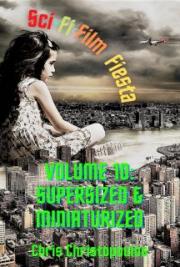Replenishment is a one-time service. If the reserve
a. Acceptable conditions. In most modern diesel alkalinity test is failed again, replace the coolant. If
engines the following cooling water conditions are
the system passes the test, record the date.
acceptable:
b. Inspecting coolant.
(1) pH 8.5 to 10
(1) Inspect the coolant visually for cleanliness.
(2) Chloride and Sulfate 100 ppm
Obtain a coolant sample and place it in a clean glass
(3) Total Dissolved Solids 500 ppm
container. After allowing about five minutes for set-
(4) Total Hardness 200 ppm
tling, examine the sample for contamination (rust,
b. Softened water. If possible softened water
foreign particles, and/or sediment). The sample may
should be utilized to reduce the total hardness level
have some color (same color as original antifreeze)
of the engine cooling loop. The use of softened water
and should be clear.
will increase engine performance by reducing the
(2) Examine the sample to determine the type
precipitation of calcium and magnesium at elevated
and quantity of contamination. Rust, a chemical
temperature conditions, ensuring higher heat
combination of iron, water, and air, is frequently
transfer rates.
found. The presence of rubber particles usually in-
c. Antifreeze. Typically, engine cooling systems indicates deterioration of hoses. Replacement hoses
corporate antifreeze solutions which inhibit scale
may be indicated. Sediment may be caused by im-
and protect the cooling system when temperatures
purities in the water used in the coolant. Contami-
are encountered below freezing. Ethylene glycol
nants in the coolant can clog a radiator or heat
mixed with a corrosion inhibitor such as triazoles
exchanger and cause engine and generating system
form an inhibiting film on metal surfaces that acts
breakdown.
as a barrier in the corrosion process. The following
concentration curves should be utilized when add-
c. Cleaning the system. Clean the cooling system ing glycol solutions to engine cooling system.
whenever the coolant is drained. Usually the sys-
d. Concentration. As indicated by the chart the
tem requires nothing more than thorough flushing
concentration should exceed 30 percent. If more
out with fresh water. Refer to the engine manufac-
than 60 percent of solution is added two effects will
turer’s literature for instructions. If any part of the
be realized; first a decrease in heat transfer rates,
system is rusted or partially clogged, it is necessary
second a lowering of the system freeze protection.
to use cooling system cleaning compound and condi-
tioner, stock number 6850-00-598-7328. Do not use
D-3. Cooling system maintenance.
the compound as a routine maintenance procedure.
Maintenance consists of periodically testing the an-
Instructions for using the compound are included
tifreeze, inspecting the coolant for cleanliness, and
with it.
TM 5-685/NAVFAC MO-912
D-4. Filling the cooling system.
c. Do not dilute arctic-type antifreeze with water
Refer to the engine manufacturer’s literature for
or inhibitor. It is ready for use as issued.
instructions on filling the cooling system. This is
applicable to either new systems or those just
Table D-l. Antifreeze solutions.
cleaned and serviced.
a. Cooling system protection is required for all
GUIDE FOR PREPARATION OF ETHYLENE
liquid cooled diesel engines. In areas where tem-
GLYCOL ANTIFREEZE SOLUTIONS
Lowest Estimated Pints of Antifreeze Needed to
peratures no lower than -55 degrees F ( -48 de-
Temperature in Area Prepare -Gallon of Solution
grees C) are expected, prepare a solution according
to the table D-l below. When temperatures below
(-7°C)
(- 12°C) 2.00
freezing are not expected, use a weak solution such
18°C) 2.75
as one pint of ethylene glycol antifreeze for each
(-23°C) 3.25
gallon of solution for general protection against rust
20°F 29°C) 3.50
build up and scale formation with the engine.
-30°F (-34°C) 4.00
b.
40°F 40°C) 4.25
Use arctic-type antifreeze in areas where tem-
50°F 46°C) 4.50
peratures below -55 degrees F ( --48 degrees C) are
55°F 48°C) 4.75
expected.
D-2
TM 5-685/NAVFAC MO-912
APPENDIX E
SAFETY
E-1. General.
(3) Do not touch any part of an operating en-
The base engineer and his representatives are re-
gine, as the engine becomes extremely hot. Wear
sponsible for general safety conditions, for enforce-
insulated gloves as necessary.
ment of safety rules, and for the condition and use
(4) Wear approved ear protection if the engine
of all protective devices. The base engineer is re-
is operating.
sponsible for the competency of his representatives.
(5) Do not remain in the room or enclosure, or
in the plane of rotation, when starting or monitor-
E-2. Safe operation.
ing the engine.
(6) Attach an approved safety clearance tag
Safe operational practices must be followed to pre-
such as DA Form 4324 to the starting control when
vent injury to personnel and damage to equipment.
work is being done.
These practices are applicable to diesel engines, gas
(7) Make sure the engine, generator, and re-
turbines, and generators including associated elec-
lated equipment are clean. Keep oil-soaked rags out
trical equipment. Protective devices include carbon
of the generating facility to avoid a fire hazard.
dioxide fire extinguishers and first aid kits. When-
c. Generators. Personnel must be familiar with ever carbon dioxide extinguishers are used, enter
recommendations and procedures described in TM
the area where used cautiously. Make sure the area
5-682.
has been ventilated thoroughly before entering.
Never use water to extinguish a fire in the engine,
E-3. Electrical safety.
generator, or associated electrical equipment.
a. General. All operating must be familiar with
a. Diesel engines. The engine operator must per-the following general safety precautions.
form the following visual checks before and during
(1) Do not rely on safety devices. Never assume
operation.
power is off or disconnected. Use and/or look for a
(1) Make sure engine coolant is at the proper
safety clearance tag before working on high voltage
level and has the proper amount of antifreeze.
equipment.
Check hoses for good condition.
(2) Use rubber gloves, with valid “usefulness”
(2) Make sure engine air requirements for com-
certification, when working on equipment or trans-
bustion are met. Check air filters and cleaners for
mission lines.
cleanliness and good condition.
(3) Stand on good rubber mat when working on
(3) Make sure the engine, generator, and re-
generator equipment or switchgear.
lated equipment are clean. Keep oil-soaked rags out
(4) Have a person qualified in first aid for elec-
of the generating facility to avoid a fire hazard.
trical shock present at all times when working.
b. Rescue of shock victims.
(4) Guard against accidental or unintentional
(1) Protect yourself with dry insulating mate-
starting when work is being done on the engine or
rial.
associated equipment. Attach an approved safety
(2) Open the circuit, wear rubber gloves to pull
clearance tag such as DA Form 4324 to the starting
the victim away from the live conductor. Do not
control when work is being done.
touch the victim with bare hands until the circuit is
(5) Make sure engine lubricant and fuel are at
open.
the proper levels.
c. First aid. Look for hemorrhage, stoppage of b. Gas turbines. The engine operator must be breathing, wounds, fractures, etc. Indications of
alert for the presence of health and fire hazards.
shock include: pale face, clammy and sweaty condi-
Make sure the generating facility is well ventilated
tions, weakness, and a weak and rapid pulse. Do the
when using cleaning solvents. The following re-
following in any emergency.
quirements must be met when the engine room is
(1) Send for a doctor or carry the victim to a
entered.
doctor.
(1) The gas turbine shall be shut down or lim-
(2) Make sure the victim is comfortable. Keep
ited to idle power.
the victim warm, quiet, and flat on the back.
(2) The enclosure door shall be kept open. If
(3) Loosen the victim’s clothing. If breathing
the gas turbine is operating, station an observer at
has stopped, apply artificial resuscitation. Study
the enclosure door.
the procedures in TM 5-682, Section VIII. Do not
E-1
TM 5-685/NAVFAC MO-912
wait until an emergency requiring aid occurs, know
(5) Feel for th e patient’s pulse. Failure to find a
what to do.
pulse does not indicate death. Immediately begin
(4) Treat serious bleeding and stoppage of
artificial resuscitation. Continue until the doctor
in that order before anything else is done.
arrives.
TM 5-685/NAVFAC MO-912
APPENDIX F
RECORDS
F-1. Manufacturer’s forms.
corrective measures. This data helps determine the
Manufacturers provide specific instructions for the
need for further maintenance. Supervisors can de-
use and care of their products. Very often these
velop a local checklist and use it for inspections not
instructions include forms and log sheets for record
requiring generator operations. Complete a DD
keeping on an hourly or daily basis for continuously
Form 2744 for each scheduled emergency or auxil-
operating engines and generators.
iary generator exercise. When possible, fill out the
forms during unscheduled power outages. During
F-2. DD Form 2744 (Emergency/Auxiliary
extended generator operations, check generators as
Generator Operation log).
frequently as manpower and scheduling permit.
Use DD Form 2744 for inspection testing of
Only one form is necessary for each event. Annotate
emergency/auxiliary generators. Enter readings im-
each check on the back of the form, to assist in
mediately after start and prior to shut-down. If the
troubleshooting if a problem arises between checks.
engine runs more than one hour, record every two
The workcenter should keep completed forms for
hours with a minimum of two readings. Use the
quick reference. If desired, place a second copy on
form to record system performance during inspec-
the unit in a protective cover. The supervisor re-
tion and testing. Record information such as operat-
sponsible for maintaining emergency/auxiliary gen-
ing data, condition of lube oil (viscosity test), condi-
erators and associated equipment must review com-
tion of plant and subsystems, deficiencies and
pleted forms periodically.
F-1
TM 5-685/NAVFAC MO-912
EMERGENCY/AUXILIARY GENERATOR OPERATING LOG (INSPECTION TESTING) 1 ENGINE DATA
6. VOLTAGE REGULATOR (See Note
a. MAKE
b. MODEL U N REMARKS
.
a. REGULATOR
c. SERIAL NUMBER
d. RPM
MOUNTS
b. RHEOSTAT CONDITION
HOUR METER
START
FINISH etc.
.
7. AUTOMATIC TRANSFER PANEL (See Note
. . . . . . . . . . .
f. INSPECTION TEST OPERATOR
g. D TE
S U N
REMARKS
a. CONTACTS BURNED
h. BASE/POST
i. UNIT ,
b. MECHANISM BINDING .
ALTERNATOR DATA
a. M A K E
b. MODEL
c. WIRING DAMAGED
SERIAL NUMBER d. KW RATING
d. COMPONENTS
OVERHEATED
VOLTS
f. PHASE
8. COOLING SYSTEM (See Note 2 )
a. TEMP. DURING STANDBY b. TEMP. DURING OPERATIONS
g. SHOP SUPERVISOR h. DATE;
c. COOLANT ADDED
d. ANTIFREEZE PROTECTION
i. LOCATION
j.
,
RECORD
NUMBER
Note
- -
e. FAN BELT CONDITION f. RADIATOR AND LOUVER
3. GENERAL CONDITIONS
Note 7)
REMARKS 9. LUBE OIL SYSTEM
a. OIL CHANGED
b. OIL ADDED
/eve/J
a. CLEANLINESS
YES N O YES NO
b. EXHAUST
c. LUBE OIL CONDITION
d. LEVEL IN GOVERNOR
CONDITION
ITEM
Note 2 J ALTERNATOR EXCITER
c. ENGINE VIBRATION
. .
10. KW LOAD
d. LOOSE ITEMS
Linkage, etc. J
PH2 PH3
1 1 . A M P E R A G E
TURBO VIBRATION
PH2 PH3
12. VOLTAGE
f. WATER LEAKS
g. LOCATION OF LEAK
YES NO
13. BRUSHES AND
4. FUEL SYSTEM (See Note 7)
BRUSHES RIGGING
S U N REMARKS
14. SLIP RING
a. FUEL LEVEL (Day
CONDITION
15. COMMUTATOR
b. FUEL LEVEL [Storage C O N D I T I O N
16. VOLTAGE
PH2 PH3
c. WATER DRAINED
d. FUEL LEAKS
YES NO YES
NO 17. BATTERY CHARGER
LOCATION OF LEAK b. AMPS
5. BATTERY BANK
Note 7 ) 18. HYDROMETER 19. STARTING AIR 20. AMBIENT
U N REMARKS,
R E A D I N G
TEMP.
II. CONNECTIONS
21. FILTER CHANGE
L U B E O I L
b. FUEL
c. AIR INTAKE
b. CLEANLINESS
Y E S NO
YES
NO
YES NO
22. UNIT STARTED ON
c. ELECTROLYTE LEVEL
TRY 2ND TRY 3RD TRY NOT AT ALL
Use the reverse side of this form and/or 8-l
x
paper if required for additional comments, continuation of item entries (identify by item number), and for corrective action(s) taken.
NOTE 1: Mark S for Satisfactory, U for Unsatisfactory, N for Normal, or indicate in Remarks column, as applicable.
NOTE 2: Enter data as indicated. Where no instrumentation is provided, indicate Satisfactory, Unsatisfactory, etc., as applicable.
NOTE 3: Enter Antifreeze Protection as the freeze temperature in degrees as indicated on an appropriate hydrometer.
DD FORM 2744, MAY 96 LOCAL REPRODUCTION AUTHORIZED.
Figure F-1. Sample DD Form 2744 (Emergency /Auxiliary Generator Operating Log F-2
TM 5-685/NAVFAC MO-912
Figure F-1. Sample DD Form 2744 (Emergency/Auxiliary Generator Operating Log (page 2) TM 5-685/NAVFAC MO-912
APPENDIX G
DIESEL ENGINES: OPERATION, TIMING, AND TUNING INSTRUCTIONS
G-1. Starting and stopping.
and subsequent use when needed. An engine can be
a. General. Starting and stopping procedures ap-damaged by improper shutdown or starting prac-
ply to diesel engines that are not equipped with an
tices.
automatic start and shutdown feature such as the
G-2. Engine timing.
manually operated engine used in a Class B system.
The procedures may be used if an engine is to be
a. Timing function. The fuel injection system
exercised. Instructions for the operator, including
must be timed so that combustion starts at, or just
operation and recording of instrument data, are
before, piston top dead center (TDC).
provided.
(1) Early ignition produces excessively high
b. Starting. Before starting make sure engine an-
cylinder pressures and detonation from the rapid
cillary equipment is ready to function. The major
pressure rise. Late ignition occurs when the piston
portion of normal wear occurs while starting a cold
is moving away from the cylinder head, conse-
engine or an engine which has been idle. Proper
quently the expansion ratio is reduced and effi-
starting technique includes inspection to verify that
ciency is lost. Another timing function is the rate of
the engine and its accessory plant are ready for
injection, or the duration of the injection period.
(2) Injection continues over a measurable pe-
operation, adequate fuel is available, and lubricat-
riod of time, usually expressed in degrees of crank-
ing oil, coolant and other supplies are at proper
shaft rotation. It is desirable to inject the fuel as
levels. Starting involves proper positioning of the
quickly as possible without creating high cylinder
engine, use of the starting system and proper accel-
pressures. The fuel burning period should be com-
eration to operating speed. Starting also includes
pleted within the 15-20 degrees of crankshaft rota-
application of the load to the engine.
tion after top dead center.
c. Operation. After engine operation







